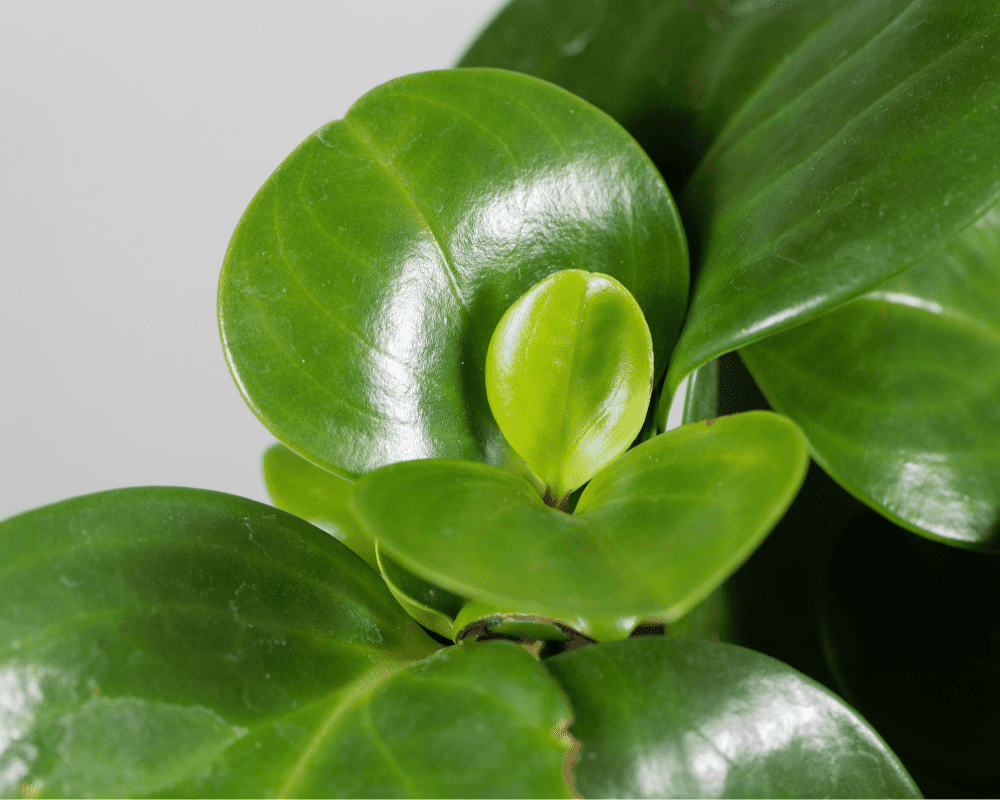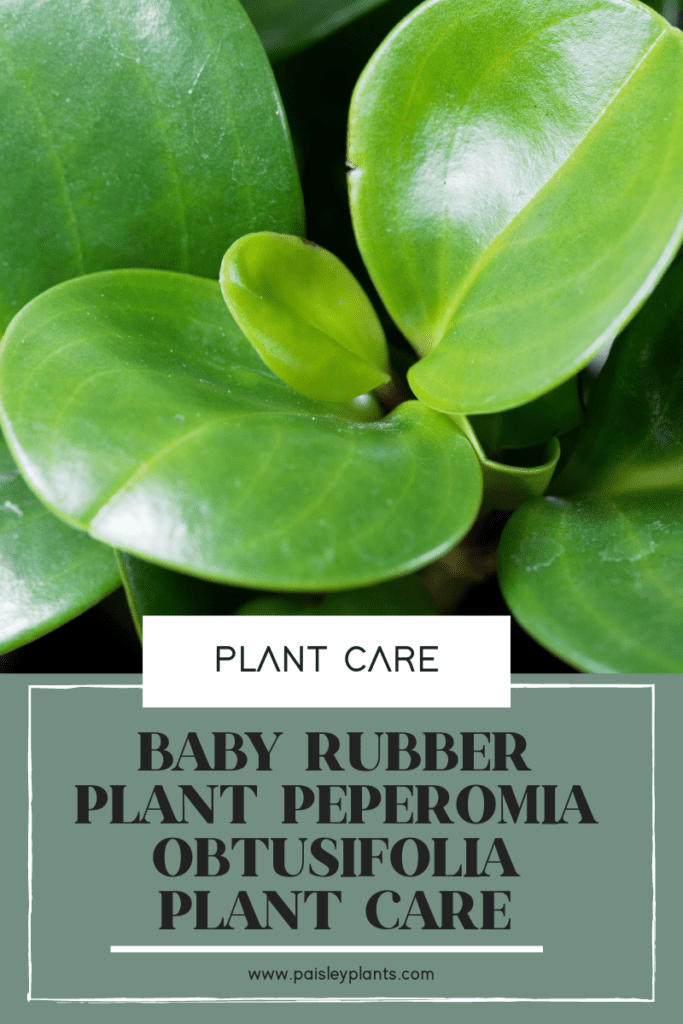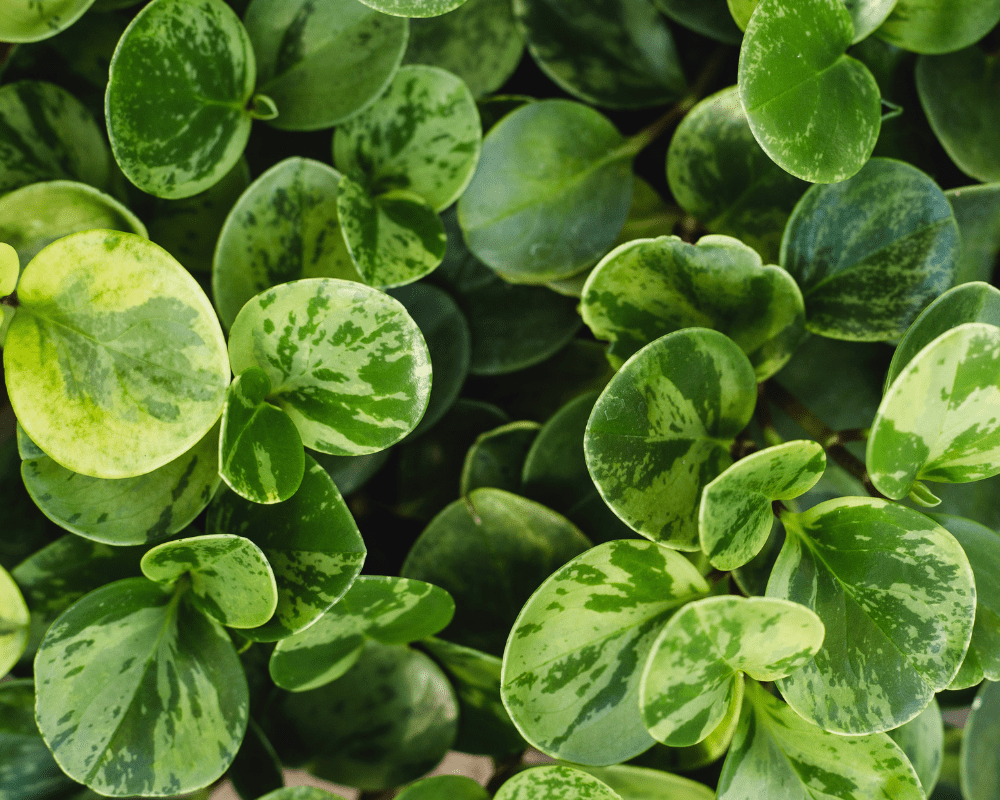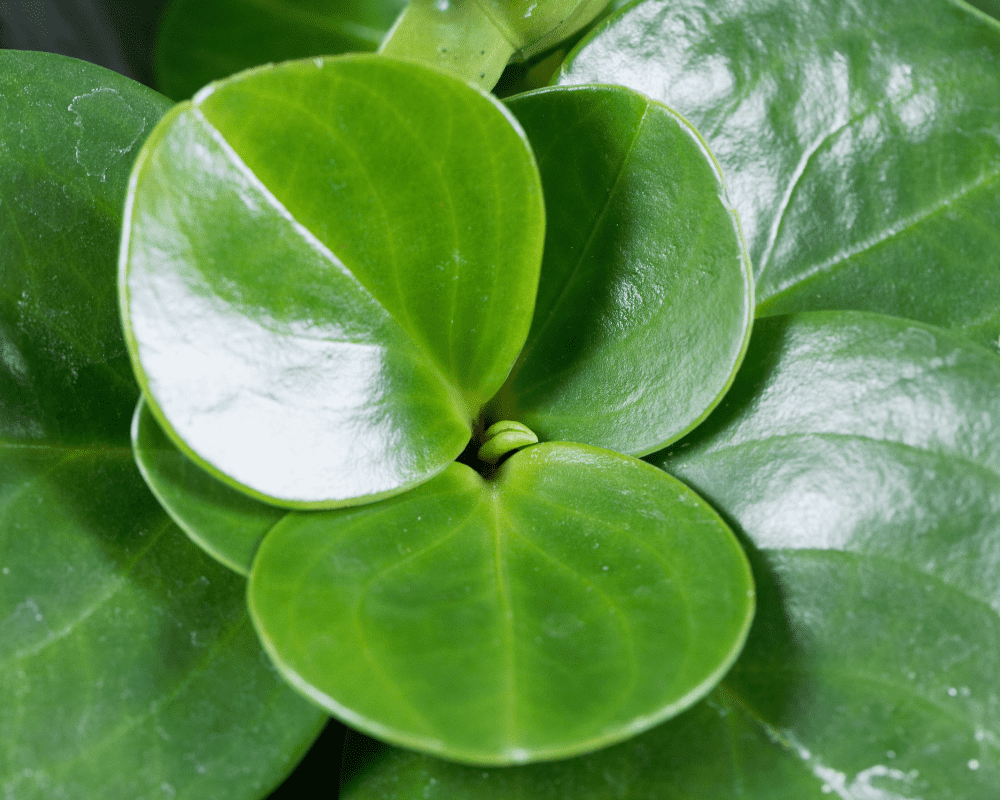So, what’s going to be your next houseplant? Maybe you don’t always go looking for new plants, but maybe you do! Or maybe they just seem to work their way into your basket when you go shopping! Whatever’s the case, you can’t go wrong with a Baby Rubber Plant (Peperomia Obtusifolia).
This compact, low maintenance, tropical looking plant with fleshly leaves would make a nice addition to any room in your house. The beautiful foliage is what gives this plant its beauty.
Even though its common name (Baby Rubber Plant) sounds like the larger Rubber Plant (Ficus Elastica), it is not related. It is part of the large Peperomia genus and the subtitle “obtusifolia” means “blunt-leaved.”

Other common names you may hear are Radiator Plants, Pepper Face Plant and American Rubber Plant.
The Baby Rubber Plant is native to South America where it grows in tropical rainforest regions. This means it will prefer a spot in your home where it’s humid and the light is bright, but indirect.
In their native environment, they grow on the forest floors and climb over dead logs. They grow under the shade of the tree canopies and thrive in these conditions.
Table of Contents
Toxicity
Baby Rubber Plants are not known to be toxic to humans or animals. You should still be careful to place them safely in your home as any ingestion of plant material is not recommended for small children or pets.
Peperomia Obtusifolia Care

This post includes affiliate links.
1. Water
Allow the topsoil to dry out completely. Water less as opposed to overwatering. The thick leaves store water, so don’t worry if the soil is dry, especially during the cooler winter months when the plant is basically dormant.
2. Light
Windowsills are a great spot for your Baby Rubber Plant. They are also often seen in greenhouses or conservatories as good light is an important factor in their growth.
Be sure to find a good spot to place your Baby Rubber Plant that gets at least six to eight hours of bright, indirect light per day. Also, be sure to rotate your plant often so it grows evenly on all sides.
Direct bright light can burn your plant, so be sure to avoid this. An even, consistent source of indirect sunlight will keep your plant in the best condition and avoid any problems.
If you are keeping your plant in your office, the fluorescent lights will be a sufficient light source if they are on for at least eight hours per day. These plants are tolerant to a few months of low light conditions. They are able to live in low light conditions but won’t grow very fast, if at all.

3. Soil
Your Baby Rubber Plant needs to have a good peat based soil that drains well. You can mix your own potting mix with two parts peat and one part perlite or sand.
This is a good mix and the main consideration is that the soil drains well and is also well aerated.
4. Fertilizer
Baby Rubber Plants really only need to be fertilized during the spring months. Use a diluted liquid fertilizer for this approximately every two weeks and only once a month during the rest of the growing season. You do not need to fertilize your plant from fall to springtime, however.
5. Temperature and Humidity
These plants are native to South America and grow in the rainforest. They love warm, humid conditions with a room temperature between 65 and 75 degrees F. Don’t keep your Baby Rubber Plant in temps lower than 50 degrees F though as they won’t do well.
These plants thrive on high humidity and will not do well in a spot where there a cold drafts. Keep them away from air conditioning or heating vents or drafty windows and doors.
You can mist your plant during the warmer months to increase the humidity levels. Keep in mind to not mist your plants too much though. Over-misting could cause fungal diseases to form, Also, if you place it outdoors it will benefit from the moisture and nutrients from rainfall.
Any time you can have your plants outdoors over the summer months, the better. The nutrients from the rainfall benefit them greatly, as do the prolonged daylight hours.
6. Preventing Pests and Diseases
Relatively few problems with pests affect Baby Rubber Plants. Occasionally, they may have spider mites, but if this happens, you can rinse off the plant with water over the sink if you see them.
After you rinse off the leaves, wipe them off with an insecticidal soap or neem oil.
You can prevent having problems with pests by doing this once a month by spraying or wiping your Baby Rubber Plant with insecticidal soap or neem oil. This should deter any bugs.
As far as diseases go, not overwatering your Baby Rubber Plant will help the most in preventing diseases. Don’t let your plant sit in excess water and be sure your pot has good drainage. Root rot can occur from overwatering.
7. Pruning
Pinching the tips of the stems will help encourage new healthy growth for your Baby Rubber Plant. This is a generally compact, bushy plant, so keeping it trimmed back will only enhance its natural beauty.
Baby Rubber Plant Propagation Tips
There are two ways to propagate your Baby Rubber Plant. Either through division or through stem cuttings.
If you do it by division, you will need to remove the entire plant from its pot, shake off the soil from the roots and divide the plant into sections. You can then take each section and repot it in new soil in a different pot.
The roots should pull apart relatively easily as these plants don’t have a very deep or long root system. Don’t be afraid to handle your plant a bit roughly. Most plants are very resilient and hardy. As my doctor told me when I had my first babies (I had twins first!) “Don’t be afraid to handle them – they won’t break!” It’s the same with plants.
When you propagate with leaf cuttings, be sure you take at least a four inch section to ensure you have enough to produce a good root section. Place the cuttings into a glass of water. It will begin to form new roots in a few weeks.
One of the best ways to help the roots take hold when you do plant the cutting is to dip it into rooting hormone powder. This just gives your cutting an extra boost when it starts growing in the new pot. Keep the soil moist, but not overly wet.
Repotting
You won’t have to repot your Baby Rubber Plant very often. It has a small root system so probably once every few years will be sufficient.
Repot your plant in a pot with a drainage hole that is only 1 – 2 inches larger than the original pot size. This will prevent water from standing inside the pot and causing the roots to rot.

Common Problems
Leaves turning yellow – This is due to overwatering and may lead to root rot.
Drooping leaves – This is caused from too much light, feeding the plant too much, or letting it get too dry.
Leaves falling off – Extreme temperature changes can can cause leaves to drop. Be sure to keep your plant in a spot where the temperature remains even.
Browning leaf tips – Too cool of temperatures cause brown spots to happen. Baby Rubber Plants don’t do well in temperatures below 50 degrees F. They need to be kept in warm enough temperatures so this does not happen.
FAQs
Yes, but only if you live in a warm, humid region such as Florida. Otherwise, it should be grown as indoor plants. You can put your plant outdoors during the summertime providing the temperatures remain above 50 degrees F overnight.
It may be getting too much water or not enough – Check the soil moisture level. Dry out the soil if it is too wet or water the soil if it is too dry.
If you keep your plant in an extremely warm and humid environment with bright, indirect sunlight and regular watering, it will grow faster since this is its natural habitat.
Baby Rubber Plants are an easy and lovely choice for the beginning gardener. And, they look really cute! You can choose either a plant with solid green leaves or one with variegated green and white leaves. It depends on what you like the most.
Once you decide and find the perfect place to put your Baby Rubber Plant, you will be glad you have this beautiful and easy to care for plant at home or in your office.
Who knows, maybe you’ll decide to buy more than one and start your own houseplant collection! Keep on growing!
If you love peperomia plants, be sure to check out our Watermelon Peperomia care guide for a plant that actually looks like watermelons! Love turtles? Click over to our String of Turtles plant care guide for another kind of Peperomia plant!
